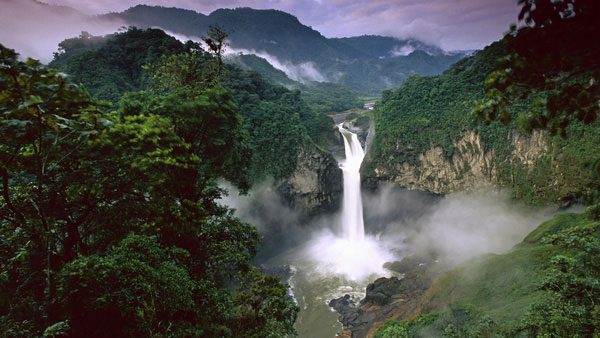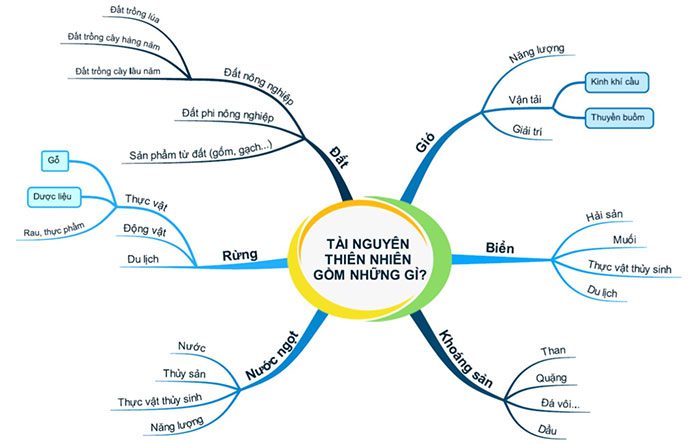Nature is a familiar term that we often use in our daily learning and labor activities. However, how many of us can truly understand “What is nature?”, “What does nature include?”, “What are the types of natural resources?” and “What is the role of nature?” If you are still unsure about these questions, let’s explore each issue in the article below.
What is nature, and what does it include?
According to the definition from the open encyclopedia Wikipedia, nature, also referred to as the natural world or the material universe, is known in English as nature. It encompasses all forms of matter and energy that exist from the tiny level of atomic particles to the vastness of stars, galaxies, and the universe.

Nature includes everything that surrounds humans that is not created by human hands.
This is the scientific understanding of the term “nature,” while in a simpler and more common sense, nature includes everything that surrounds humans that is not created by human hands. Nature consists of air, climate, water sources, natural resources, flora and fauna, and geographical and topographical elements.
What is the role of nature?
To fully understand the role of nature, let’s examine how nature impacts the natural environment and the living conditions of humans.
The role of nature in natural life
It can be said that nature is the cradle of life, as well as the place where life ends. For instance, when an area suffers from natural disasters like floods or storms, hundreds or thousands of lives may be lost, and the living environment can be severely damaged, marking the end of life.
However, this does not signify a complete end. After the storm passes, new plants may sprout from fallen trees. The flowing silt will provide nutrients for the growth of vegetation, which in turn attracts herbivorous animals and rodents to return. A large population of herbivores leads to the presence of predators, creating a balance in the ecosystem.

Classification of natural resources.
This is the first role of nature: to create life and help maintain ecological balance.
The role of nature in human life
Nature provides the resources necessary for human life and production activities. Simply put, we breathe air from nature, drink water from nature, and exploit various minerals, forest products, agricultural products, and seafood to meet our needs.
Nature determines the morphological characteristics and living conditions of humans. For example, people living in East Asia, where the climate is hot and humid year-round with abundant plains and water sources, tend to settle along major rivers, where rice farming can thrive.
In contrast, white people living in Europe, where the temperate climate is cool and the average annual temperature is low, must cultivate crops like wheat to adapt to the local climate.
Nature also provides us with a wealth of natural resources and minerals, such as water, mineral resources, seafood, and forest products. The more concentrated the resources in an area, the denser the population residing there.
However, human living and exploitation activities in some regions are currently destroying nature and the natural environment, necessitating a collective effort to address these issues promptly.
Types of natural resources
In simple terms, natural resources are those that are readily available in nature, which humans exploit and utilize to meet their living needs.
Classification of natural resources based on nature
Natural resources can be classified into six main types:
- Land resources: agricultural land, non-agricultural land, industrial production land (such as for brick-making, ceramics…)
- Forest resources: including animals, plants, forest products, and tourist sites…
- Freshwater resources: drinking water, production water, freshwater fish, aquatic plants, hydropower…
- Wind resources: wind strength, transport…
- Marine resources: seafood, salt, aquatic plants, tourist sites…
- Mineral resources: coal, ores, limestone, oil and gas…
Classification of natural resources based on renewability
Based on renewability, natural resources are divided into three main types:
Renewable resources
These are resources that can naturally sustain and replenish themselves, such as freshwater, land, and flora and fauna. However, excessive exploitation and usage, as seen today, have rendered many natural resources unable to recover.
Non-renewable natural resources
These resources have been transformed over millions of years under the influence of nature. Once depleted, they cannot be replenished, such as minerals, coal, copper ore, lead, iron, aluminum, and limestone…
Perpetual energy resources
These are natural resources that do not get depleted, such as sunlight, wind, tides, and ocean waves. In many developed countries around the world, there has been a gradual shift towards utilizing perpetual energy resources instead of fossil fuels.
The current status of natural resources in our country
Similar to many countries around the world, Vietnam’s natural resources are gradually shrinking and depleting. The culprits behind these issues are humans themselves.
According to statistical data, forest areas are shrinking day by day due to illegal exploitation activities. The reduction in forest area leads to habitat loss for flora and fauna, pushing them closer to the risk of extinction in the wild.
Water sources are becoming polluted, making the demand for clean water more urgent. Mineral resources are being depleted, air pollution, soil pollution, and the desertification of rivers, lakes, and ponds are increasingly rising.
These conditions demand that we become more conscious of how we exploit and use resources, not only for our own livelihoods but also for future generations.


















































